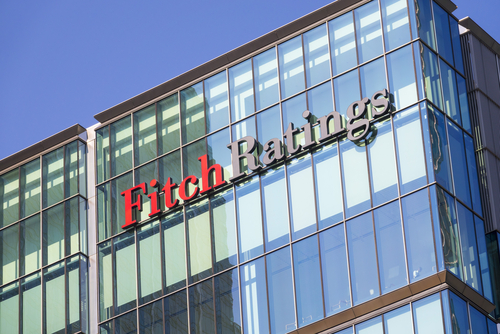Fitch Affirms U.S. Credit Rating Central Banks Warn on Inflation
Credit rating agencies and central banks outline their positions on global economic challenges,
from the U.S. deficit to British and American inflationary pressures.
Contents
Fitch
Fitch affirms the U.S. sovereign credit rating at “AA+” with a stable outlook
On Friday, Fitch Ratings affirmed the United States’ long-term foreign currency credit rating at “AA+”,
citing the country’s large economy, high income levels,
and exceptional financing flexibility stemming from the U.S. dollar’s pivotal role as the world’s primary reserve currency.
The agency noted that the dollar’s 58% share of global reserves supports the federal government’s financing capacity,
expecting the U.S. currency to maintain dominance in trade and finance despite policy uncertainties.
Fitch also forecasted that the U.S. fiscal deficit would decline to 6.9% of GDP in 2025,
down from 7.7% in 2024, driven by resilient economic growth, strong stock market performance, and higher tariff revenues.
According to its estimates, tariff revenues are set to surge to $250 billion this year,
compared to $77 billion in 2024, strengthening the fiscal position.
This decision is aligned with S&P Global Ratings, which also maintained its “AA+” rating on the United States,
highlighting that the jump in tariff revenues provides crucial support against financial pressures arising from former President Donald Trump’s tax cuts and government spending packages.
In its report, Fitch concluded that the U.S. outlook remains stable,
reflecting confidence in the American economy’s ability to adapt to ongoing challenges.
England
Bank of England Governor: Weak growth and falling labor force participation are the UK’s key challenges
Bank of England Governor Andrew Bailey said that Britain faces a “significant challenge” in the form of weak economic growth and declining labor force participation since the COVID-19 pandemic.
Speaking at the Federal Reserve’s annual symposium in Wyoming, Bailey explained that an aging population and reduced youth participation in the workforce due to illness have added pressure on the economy, making it essential to focus on boosting productivity.
He added: “Looking at potential growth rates, this reality places greater emphasis on enhancing productivity growth, as aging will not change in the foreseeable future.”
Bailey noted that the Bank of England has shifted its focus from long-term unemployment trends to labor force participation levels, considering them a more relevant factor in the current environment.
Official data shows that the share of Britons aged 16 to 64 active in the labor market remains below pre-pandemic levels, while other advanced economies have managed to recover more quickly.
Cleveland
Cleveland Fed President: Too early to cut rates while inflation remains high
Beth Hammack, President of the Federal Reserve Bank of Cleveland, said she is hesitant about lowering interest rates as long as inflationary pressures persist, stressing the need to maintain a moderately restrictive monetary stance.
In an interview with CNBC on Friday, Hammack explained that she does not share market expectations of an imminent rate cut, despite Fed Chair Jerome Powell’s earlier comments that current conditions “may warrant” some policy easing.
She added: “Inflation has been above the target level for more than four years, and we must regain control. That is why I believe we need to continue with relatively tight monetary policy.”
Hammack also noted that her estimate of the neutral interest rate—the level that neither stimulates nor restrains the economy—is higher than that of most other Fed officials, emphasizing that she does not favor an early shift toward easing, as it could risk reigniting inflationary pressures.
Fitch Affirms U.S. Credit Rating Central Banks Warn on Inflation

